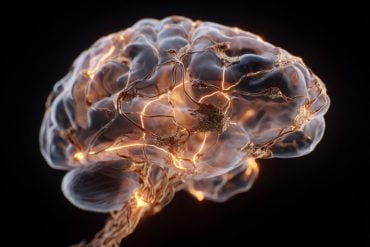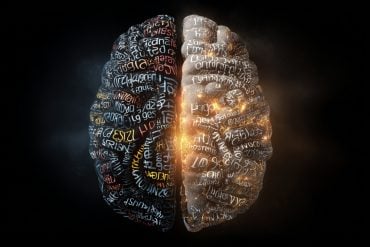Summary: Empathy, often considered a fixed trait, has been shown to be malleable in adults, influenced by observing the empathetic reactions of others. The study utilized Computational Modeling and functional Magnetic Resonance Imaging (fMRI) to demonstrate how empathy levels adjust in adult brains based on social environments.
Key findings include the role of the anterior insula in empathy processing, changes in neuronal response due to observational learning, and the implication that creating an empathic work culture can positively shape employee interactions and attitudes.
Key Facts:
- Adults can learn to increase or decrease their empathetic responses by observing others, challenging the notion that empathy is a static trait.
- Changes in empathy were linked to altered brain activity in the anterior insula, a key region for empathy processing, highlighting the neural basis of empathy’s social transmission.
- The study underscores the importance of fostering empathetic environments, suggesting that empathy can be cultivated and is crucial for effective teamwork and client interactions.
Source: Julius-Maximilians-Universität Würzburg
Prof. Dr. Grit Hein’s latest assessments of empathic abilities once again challenge the old adage, “You can’t teach an old dog new tricks.” It seems that not only children but also adults can adopt empathic responses from close caregivers in addition to their genetic predispositions. Adults, too, are malleable and can learn to be more or less compassionate through observing others.
The professor of Translational Social Neuroscience at the Center of Mental Health of the University Hospital Würzburg (UKW) has managed to capture this complex social phenomenon through mathematical models, a procedure known as Computational Modeling, and has plastically mapped it in the adult brain using functional Magnetic Resonance Imaging (fMRI).
Her findings, published in the Proceedings of the National Academy of Sciences, provide a computational and neuronal mechanism for the social transmission of empathy, explaining changes in individual empathic responses within both empathic and non-empathic social environments. Grit Hein has, in a sense, formalized the process by which empathy is transmitted.
Social transmission of empathy was tested in various studies. The central question of Hein’s research was whether empathy, or lack thereof, for another person’s pain, is socially transmitted. In a total of four studies, participants first watched videos of hands receiving painful stimulation and indicated their own feelings during this experience on a rating scale.
After providing their own rating, they were shown the empathic or non-empathic responses of other individuals to the same videos. Finally, participants rated their empathy again, this time regarding the pain of a new person. With this experimental setup, Grit Hein and her team were able to test how and if a person’s empathy changes in the presence of empathic and non-empathic peers.
Transmission of empathy relies on observational reinforcement learning
By observing the empathic reactions of others, participants learned to be more or less empathetic.
“Empathy ratings increased or decreased depending on whether empathic or non-empathic reactions were observed. Interestingly, the neuronal response to the pain of another person also changed,” says Grit Hein.
The neural changes measured in the fMRI scanner were reflected in altered connectivity of the anterior insula, a brain region associated with empathy processing. Hein and her team’s research demonstrates that these neural changes can be explained by mathematical learning models.
This implies that increased or decreased empathy is genuinely induced through learning from others and is not merely an imitation or displayed for the purpose of pleasing others.
Investing in an empathetic environment is worthwhile in a professional context. Does this mean that those who wish to have a good team must create a conducive environment?
“Absolutely,” responds Grit Hein. “It is essential to understand that adults can learn or unlearn empathy through observation, even from individuals they do not know.”
Consequently, those who create a work environment lacking in empathy for reasons of cost-saving, time constraints, or mismanagement must be aware that such behavior shapes employees in the long term and, in turn, affects their interactions with clients or patients.
Previous studies have shown that positive empathy can transition into prosocial motivation, increasing cooperation and willingness to help. However, excessive empathy can also lead down a different path, inducing stress and potentially resulting in burnout or complete withdrawal. Additionally, empathy can be perceived as demanding.
‘Respect is the soil for empathy’
“The good news from our studies is that we have the means to shape empathetic ability in adults through appropriate measures in both directions,” says Grit Hein.
“It is possible to learn positive empathy from others. However, for empathy to thrive long-term, it requires an atmosphere of mutual respect. One can respect someone without having empathy for that person, but it is challenging to develop empathy if the other person is not respected as a human or if disrespect is accepted in society.”
The complex social interactions are among the research focuses of Grit Hein. To understand these interactions, it is necessary to start very basically, establish the fundamental mechanisms, and gradually incorporate social factors like puzzle pieces. For this reason, the current study was conducted exclusively with women.
However, the social empathy transmission effect was replicated in different environments (MRI and laboratory) and with female participants of various ages and ethnicities. Both younger and older European and Asian participants responded similarly.
Subsequent studies on empathy that include mixed genders represent an appealing approach. At the moment, Grit Hein is further examining whether the model can also be applied to other social behaviors, such as selfishness or aggression.
About this empathy and psychology research news
Author: Grit Hein
Source: Julius-Maximilians-Universität Würzburg
Contact: Grit Hein – Julius-Maximilians-Universität Würzburg
Image: The image is credited to Neuroscience News
Original Research: Open access.
“The social transmission of empathy relies on observational reinforcement learning” by Grit Hein et al. PNAS
Abstract
The social transmission of empathy relies on observational reinforcement learning
Theories of moral development propose that empathy is transmitted across individuals. However, the mechanisms through which empathy is socially transmitted remain unclear.
Here, we combine computational learning models and functional MRI to investigate whether, and if so, how empathic and non-empathic responses observed in others affect the empathy of female observers.
The results of three independent studies showed that watching empathic or non-empathic responses generates a learning signal that respectively increases or decreases empathy ratings of the observer. A fourth study revealed that the learning-related transmission of empathy is stronger when observing human rather than computer demonstrators.
Finally, we show that the social transmission of empathy alters empathy-related responses in the anterior insula, i.e., the same region that correlated with empathy baseline ratings, as well as its functional connectivity with the temporoparietal junction.
Together, our findings provide a computational and neural mechanism for the social transmission of empathy that accounts for changes in individual empathic responses in empathic and non-empathic social environments.







